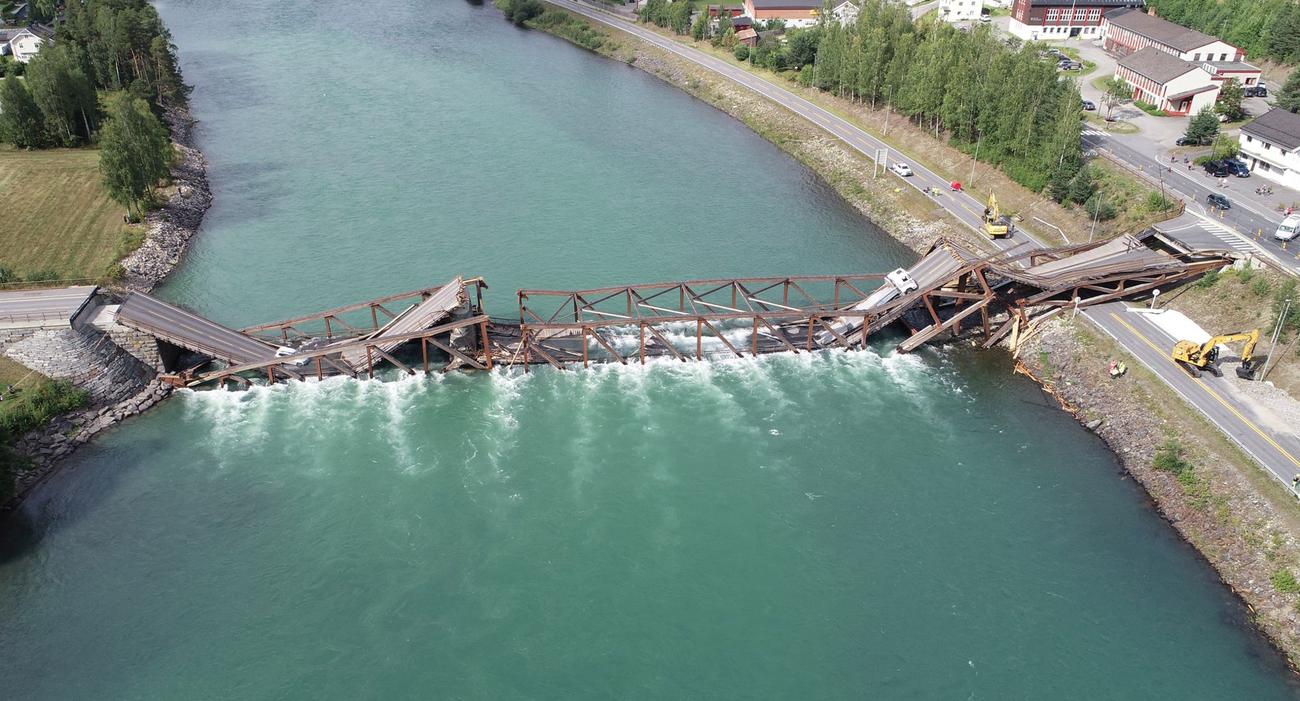Much consternation, but fortunately no casualties, when the Norwegian bridge in Tretten in the Øyer region in the south of the country gave way under the weight of a truck crossing it. The driver of the truck and the driver of the passenger car had to be extricated, all were uninjured. The accident occurred in August 2022, exactly 10 years after this glulam and metal facility was put into service. Only recently did the Norwegian Security Investigation Agency (NSIA) publish its findings, as reported by architecture website Dezeen.
“The investigation showed that insufficient care was taken in the planning, design, inspection and approval of Tretten Bridge, taking into account the risk factors associated with its unconventional design”, the report says. It also condemns “strong concentration on the aesthetics of the work” which combined with the choice of materials and assumptions for this project (rapid construction, reuse of piers and span length) led to disaster.
Weakened diagonal
An earlier report pointed to a weakness in one of the wooden diagonals, which weakened over time before snapping. The Tretten Bridge was designed at a time when Norwegian building regulations were transitioning from a national system to European regulations. Back then, national standards could still be used, although, unlike the European version, they did not take into account the “block shear failure” that proved fatal to the bridge.
Another bridge of the same design, the Perkolo bridge, collapsed already in 2016. The designers of the work, the firm Plan Arkitekter and the engineering company Norconsult, nevertheless estimated the lifespan of their construction at a century. When asked by Dezeen, the architecture firm believes the collapse is caused “inadequate regulations” time. “Aesthetics were dictated by structural and constructive considerations, explains architect Yngve Aartun. It was not a defining theme for the structure decision in the planning process.’ Still, 4 bridges like the one in Tretten will be rebuilt, while 9 others are still closed or have limited access.




